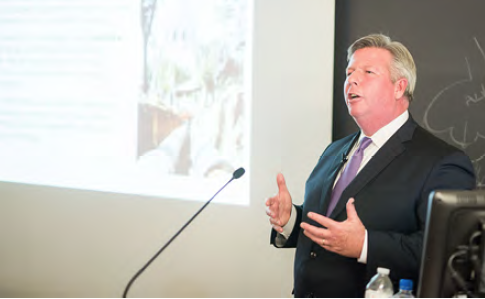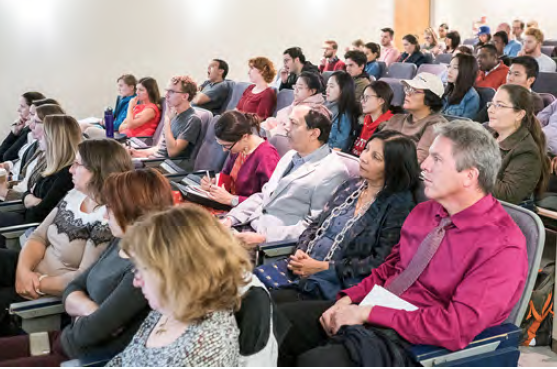Global energy leader inspires students, forges partnership at #BUCPUA Keynote Event

On Thursday, October 13, students and stakeholders from across Greater Boston gathered to hear about the powerful and resilient capacity of district energy. Rob Thornton, President and Chief Executive Officer of the International District Energy Association (IDEA), captivated the audience for more than 90 minutes. The #BUCPUA Fall 2016 Keynote Lecture, “District Energy in Cities: Unlocking Efficiency, Sustainability and Resiliency through Infrastructure Investment”, illustrated the history of district energy, its design, and its impact upon the environment. After the lecture, the impressed audience clamored about the potential of district energy in their own neighborhoods.
Rob Thornton is also an active partner with the United Nations Environment Programs Sustainable Energy for All District Initiative and he sits on the Advisory Board of the BU City Planning and Urban Affairs Program (BUPCUA). IDEA and BUCPUA are developing a robust curricula to prepare students for sustainable energy planning rooted in relevant legal and industrial practices. BUCPUA currently offers the Graduate Certificate in Applied Sustainability , which demonstrates how to quickly adopt and champion actions that promote sustainability, including district energy systems.
District Energy in Cities: Unlocking Efficiency, Sustainability & Resiliency through Infrastructure Investment (watch below)

During the lecture, Thornton outlined how cities around the globe from Copenhagen to Dubai and Paris to Boston are investing in district energy thermal heating and cooling networks to enhance resource efficiency, conserve fuel and water, and strengthen energy resiliency for local economies. Thornton described how Princeton University used its own district energy infrastructure to sustain power during Hurricane Sandy in 2012 while its surrounding neighbors were left in the dark.
This lecture also explored the shifting utility paradigm from central station generation to more distributed solutions. Planning approaches for energy mapping and investment strategies have paved a strategic foundation for sustainable cities. Locally, the Kendall Cogeneration Station simultaneously produces power and thermal energy that consumes less fuel than if produced separately and achieves up to 90 percent efficiency.
Globally, city leaders have recognized that heating and cooling buildings represents a significant opportunity to optimize efficiency, utilize local and sustainable energy supplies, and reduce greenhouse gas emissions. For instance, buildings in Sweden have reduced their greenhouse gas emissions by nearly 88 percent, which is underscored by Sweden’s building code and planning requirements. In Vancouver, Canada, the Zero Emissions Building Plan seeks to eliminate greenhouse gas emissions by 2030 partially through district energy. Heat recovery ventilators can reuse the energy of warm exhaust air to pre-heat fresh incoming air during the winter and vice versa during the summer (Carss, July 2016). Following the lecture, audience members were compelled to investigate the availability and possibilities of district energy in their own neighborhoods.
– Courtney Thraen, MET’17